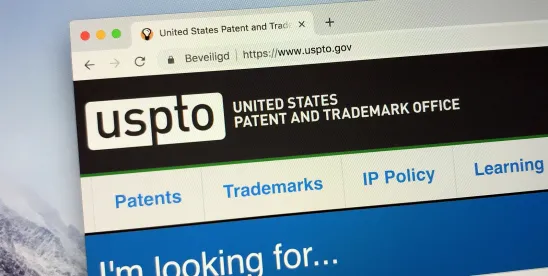Addressing the issue of whether to discretionally deny a petition for inter partes review (IPR) under the General Plastics factors when there is no “significant relationship” between the petitioners, the Director of the US Patent & Trademark Office (PTO) vacated the Patent Trial & Appeal Board’s decision denying institution. Videndum Prod. Sol., Inc. v. Rotolight Ltd., IPR2023-01218 (PTO-Ofc. of Dir., Apr. 19, 2024) (Vidal, PTO Dir.)
Videndum filed a petition requesting IPR challenging claims of a patent owned by Rotolight. In its Patent Owner’s Response, Rotolight argued to the Board that it should exercise its discretion to deny institution under 35 U.S.C. § 314(a), citing the Board’s 2017 precedential decision in General Plastic. Prior to Videndum’s petition, the Board instituted review of the same patent at the request of another party. However, one month prior to oral argument in that proceeding, the parties to that IPR proceeding jointly moved to terminate the proceeding on the basis of a settlement. The Board granted the parties’ joint petition.
In the present case, a split Board denied Videndum’s petition for institution, reasoning that Videndum’s petition was a “follow on” of the prior proceeding, and citied General Plastic even while conceding that the “Petitioner’s reliance on [the] earlier-filed petition …, even ‘as a menu and roadmap’” is not sufficient “to create ‘a significant relationship’ that favors denial under the first General Plastic factor.” The dissent agreed on that point but argued that the “General Plastic factors as whole weigh against exercising discretion to deny institution.”
Videndum requested Director review of the Board’s denial of institution based on an abuse of discretion argument. The Director granted review.
The Director found error with the Board’s application of the General Plastic factors in situations where the second-in-time petition is not by the same party that filed the first petition or by a party having a “significant relationship” with the first filer.
The General Plastic factors generally deal with how the Board should analyze whether to institute a subsequent petition on the same patent. Factor one explicitly asks whether the two petitioners are the same. However, the application of the General Plastic factors “is not limited solely to instances when multiple petitions are filed by the same petitioner.” But, when the factors are applied to different petitioners, they have been applied to petitioners who have a “significant relationship” with each other.
Here, both the parties and the Board agreed that there is not a “significant relationship” between the two petitioners. As the Director noted, the PTO has never extended the General Plastic factors “to any cases in which the first and second petitioners do not have a significant relationship.” The Director found the Board’s unprecedented extension of the General Plastics factors to be “improper[],” vacated the Board’s decision, and remanded the case with an instruction to the Board majority to “address the merits of the Petition.”
Practice Note: Patent owners fighting institution of an IPR by a subsequent petitioner should allege facts emphasizing the relationship between the two petitioners, should they exist. In their petitions for institution, patent challengers should emphasize the lack of any relationship between themselves and any prior petitioners.




 />i
/>i

